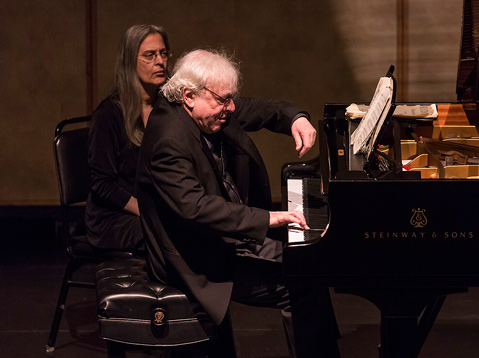Review: Richard Goode at the Lobero Theatre
May 14 Solo Piano Recital Focused on Late Beethoven Works

The faithful were out in force for this final concert in CAMA’s outstanding 2013-14 season. Richard Goode’s reputation stands to a large extent on his interpretations of Beethoven. His 1980s recordings of the complete piano sonatas have stood the test of time and remain very influential, and he continues to explore the composer’s work in programs such as this one, dubbed Beethoven’s Last Works for Piano. He opened with the Sonata in E Major, Op. 109 from 1820, and it was clear from the outset that this would be an evening of extraordinary immediacy, with the music emerging unadorned, devoid of overt showmanship or empty displays of virtuosity. Beethoven’s late style has been the subject of a vast critical literature, with nearly as many opinions as there are voices in the debate. Listening to this performer, one heard the deep structure within and experienced what the composer referred to in his instructions as “innermost feelings.” Neither fast nor slow, Goode’s playing toyed with the tempo and brought innumerable shades and textures to the notes’ rise and fall.
The Sonata in A-flat Major, Op. 110 that followed was even better, taking the audience further into the intense mental world of Beethoven, who, despite suffering from a tragic loss of hearing, chose to drive on deeper into experimental territory rather than reworking what he had done before. The six Bagatelles, Op. 119 served as a clever kind of palate cleanser for the evening’s finale, the famous Sonata in C minor, Op. 111 of 1822. First among equals, this exquisite piece of pure music was rendered by Goode with sustained imagination and a multitude of colors. There could be no encore after such a satisfying meditation on last things.



